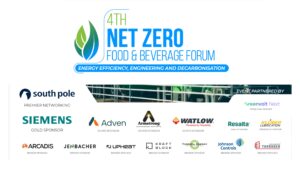Data centres are the backbone of the digital world today. They power everything right from email to social media, cloud computing, and AI. However, this digital backbone comes at the cost of consuming vast amounts of energy and greenhouse gases on a big scale. Energy consumption in data centres is believed to be more than 205 terawatt hours of electricity per year – ie more than the annual energy usage of Taiwan, Ireland, Denmark, or South Africa.

As data traffic continues to grow exponentially, data centre energy use is projected to increase dramatically. This massive energy appetite raises sustainability concerns. Moreover, it makes data centres a key focus area for reducing greenhouse gas emissions. But what are the strategies that can be used? Are there any challenges? How to achieve net zero? Let’s find that out in this article.
Strategies For Reducing Energy Consumption in Data Centres
In this section, we will go through the various strategies that can be applied to make sure the data centres are also moving towards a sustainable future. Amongst the objective of fulfilling corporate responsibility and cost-efficiency goals, these strategies are important. So, let’s take a look:
Improving Hardware and Infrastructure
More energy-efficient hardware and infrastructure design is the first step towards reducing energy consumption in data centres. Let us see the two biggest energy drains whose refinements can lead to a sustainable future:
- Advances in Server Technology
Servers account for up to 40% of data centre energy use. There are certain features that allow modern servers to process more data while using less power. It includes improved chip architecture, smart power management, and liquid cooling. Moreover, virtualization lets multiple workloads run on a single server. As a result, it improves utilization and reduces the total number of servers needed. Major tech companies like Google use machine learning to optimize data center resource management. It also helps them to improve efficiency.
In addition, new server designs optimize airflow and minimize power conversion losses. Furthermore, component-level enhancements like low-voltage memory and storage reduce power draw. New processor architectures can also be helpful in reducing energy consumption in data centres as they shrink the energy footprint of computations.
- Optimized Cooling Systems
Air conditioning and cooling can consume over 40% of data centre energy. This is to keep servers from overheating. So, innovations like:
- airflow optimization,
- waste heat reuse,
- free cooling techniques like heat exchangers,
- liquid and immersion cooling can minimize this energy drain.
Moreover, optimally controlling cooling based on server temperatures improves efficiency. Companies are also shifting data centre locations to cooler climates to leverage free cooling.
More specifically, advanced predictive modeling helps optimize the supply of cool air. This is to different parts of the data centre based on need. Furthermore, rear-door heat exchangers capture server exhaust heat to warm cold aisle air supply. Hyperscale data centres also utilize thermal storage to shift cooling loads and improve efficiency.
Sourcing clean energy
Another key strategy in reducing energy consumption in data centres is powering data centres directly with renewable energy. We can see top companies like Google, Microsoft, and Amazon in this pledge to a sustainable future as well. They have pledged to power data centres with 100% carbon-free energy. It includes wind, solar, hydropower, and other renewable sources.
Furthermore, more companies are signing renewable energy contracts like virtual power purchase agreements. It is to grow the market for green power. Moreover, onsite generation, like solar panels on data center rooftops, is also popular for emission-free energy.
Some data centre operators are also investing in battery or flywheel-based energy storage systems. This is to ride through renewable intermittency and reduce reliance on fossil fuel backups. For example, Microsoft is testing hydrogen fuel cell backup power powered by green hydrogen.
Improving Data Center Design and Management
Optimizing data centre design, size, and operating practices reduces energy waste across the board. For example:
- More modular data centre architectures allow for a pay-as-you-grow approach and avoid over-provisioning. Smart capacity planning also prevents operating empty servers.
- Closely monitoring and analyzing data centre infrastructure helps optimize cooling. It also optimizes airflow, and server loading, and identifies efficiency issues.
- Policies like decommissioning low-utilization servers and switching off unused network equipment avoid energy waste.
- The shift towards colocated and hyperscale data centres improves efficiency. It does it through resource pooling and optimizing operations.
In particular, real-time monitoring and data analytics are crucial. It helps to continuously tune data centre operations for optimal efficiency. This is across IT load, cooling, airflow, humidity, and other parameters for reducing energy consumption in data centres.
Exploring New and Emergent Technologies
Looking ahead, new technologies on the horizon could provide step-change improvements in data centre sustainability.
- Carbon Capture and Storage
Direct air capture systems can remove CO2 from data center exhaust. Moreover, it can reduce overall emissions. So, storing or utilizing this carbon improves the carbon footprint. For example, Microsoft is testing CO2 capture technology at some data centres.
- Renewable Heat Sources
Harnessing waste heat from other industries, geothermal energy, solar thermal heat, etc. can sustainably power absorption chillers for cooling. Google also uses treated sewage effluent for data centre cooling.
- AI and ML Optimization
AI and machine learning will play an increasing role in optimizing data centre design. It will also optimize automating real-time operations for peak efficiency. Google can be seen applying ML to optimize cooling in its data centres.
- Liquid Cooling
Total liquid immersion and direct-to-chip liquid cooling technologies promise great cooling energy savings. It comes with the potential to reduce this overhead by up to 90%. Microsoft is researching two-phase immersion cooling techniques.
Overcoming Challenges to Further Progress
Progress toward sustainable data centres faces headwinds. However, targeted initiatives to overcome these hurdles can accelerate the transition. So, let us look at the challenges and their solutions:
Spiraling Data Demand
Global data centre electricity demand is projected to increase by over 50% by 2023. It is driven by trends like the Internet of Things, machine learning, and video streaming. This trajectory strains efforts to decouple data centre growth from emissions increases. So, strategic approaches can help curb unchecked growth in computing. It includes prioritizing efficiency and data deletion.
Renewable Energy Limitations
The intermittent nature of renewables makes it difficult to fully transition away from fossil fuel usage. This is especially for baseload power and backup generation. So, advances in energy storage, smart grid integration, and onsite generation can smooth out renewable supply. Also, increasing renewable energy mandates and carbon pricing help account for sustainability externalities.
Cost and Implementation Barriers
Upgrading legacy infrastructure is complex and capital-intensive. Financing innovations like green bonds, power purchase agreements, and efficiency tax incentives can overcome cost hurdles. Workforce training and modular designs also ease adoption. Ultimately, public-private collaborations are key to mainstreaming sustainable practices.
Data Localization Laws
Some countries require data to be stored locally. It restricts optimizing data centre locations for renewable energy access and climate-based cooling efficiencies. So, complying with regulations while pushing for exceptions based on sustainability benefits can help. Moreover, you can invest in renewables and storage locally to green existing mandated data centres.
Water Usage Constraints
Data centres require significant water for cooling, at times straining local water access. This could be exacerbated by climate change-induced droughts. Advanced water efficiency features like reuse and alternative water sources, using air/liquid cooling technologies that consume less water can help in this.
Through proactive problem-solving and multi-stakeholder initiatives, these challenges are surmountable. But realizing the vision of a renewably powered, hyper-efficient digital future requires sustained focus. The environmental stakes are too high to let progress stall. By pooling resources and imagination, a greener data ecosystem can flourish.
The Roadmap to Net Zero
Achieving net zero carbon data centers requires a multifaceted approach. It also requires coordinated action among key stakeholders. Here are some key milestones on the roadmap.
Set Robust Efficiency Targets
Leading companies need to establish aggressive, science-based targets. It will help in improving data centre energy efficiency, such as 50% increased computing power per kWh by 2030. These stretch goals drive innovation.
Mainstream Renewable Energy Procurement
Data centre operators should sign large virtual power purchase agreements, contract direct renewable energy, and install onsite solar/wind to supply centres with over 50% clean power by 2025 and 100% by 2030.
Finance Innovation and Retrofits
Governments can offer tax incentives, loans, and grants to fund existing facility retrofits and net zero new builds. Carbon pricing programs further support the business case for efficiency.
Promote Transparency
Data centre sustainability reporting and carbon labeling should become standardized practices. This transparency also enables tracking progress and accountability.
Forge Public-Private Partnerships
Partnerships between tech companies, policymakers, and the renewable energy sector can scale up solutions like utility green tariffs for data centres.
Invest in Game-Changing Technologies
R&D funding and pilot projects for emerging technologies like carbon capture, immersion cooling, and renewable heat sources will unlock step-change improvements.
Build Workforce Expertise
Governments, companies, and universities need to support training and education to develop talent with expertise in designing, constructing, and operating sustainable data centres.
Wrapping up
Ensuring net-zero carbon data centres is ambitious but essential. Strategies like improving hardware efficiency, sourcing renewable energy, etc. can prove to be a great roadmap to do so. We have also covered the challenges and their potential solutions to help you with the whole journey. However, attending summits proves to be a powerful method to collaborate and grow as an industry. One such powerful summit is the Net Zero Data Centre summit on !st-2nd February 2024 in Berlin, Germany.
It delivers a powerful agenda covering pressing challenges and the latest solutions to decarbonize data centres. You will find through keynotes, panel discussions, networking opportunities, and more. The tracks that will be covered include power, cooling, IT infrastructure, management and planning, and more. The sessions will show cutting-edge advances in the sectors like immersion and machine learning optimization.
The insightful case studies of sustainability retrofits and net zero facilities will be presented as well. The summit aims to facilitate collaborative action planning. This is on issues like scaling renewables, technology innovations, transparent reporting standards, and financing. Moreover, attendees will be able to network with other industry leaders and forge partnerships. So what are you waiting for? Register now!




